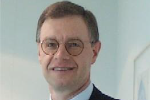Engineering event evidencing for legal documents using cryptography framework, algorithms and standards

Abstract:
Legal documents are omnipresent and a subject to fraudulent manipulation. Important examples include mail, drug prescriptions, sin taxes, contracts, deeds and stock certificates. Cryptography is a powerful and convenient tool that can be used to protect documents against counterfeiting, alteration, duplication and other forms of manipulation. The act of creating cryptographically-secured information that is added to a document constitutes an event that is visibly evidenced on the document. The talk covers history and development of ideas in applying cryptography to payment evidencing in mailing and similar applications (e.g. sin taxes) and authenticity of drug prescriptions. The talk also addresses development of standards related to these applications.We shall explore system approach whereby protection of documents can be designed at several levels, namely system level, device level and message level. We shall define alternative architectures (non-cryptographic and cryptographic, both symmetric and public key based) and criteria for security comparison. This naturally leads to some of the most challenging and original parts of the system that require new tools to achieve message level security. We will discuss some of the more effective algorithms that can be used for this purpose. We shall also explore development of national and international standards related to mail and other applications. In particular we will discuss the need and motivation for standards, how development and production of standards are organized and difficulties associated with these processes, both natural and artificial.
This seminar will be presented by the Institute for Quantum Computing and held in QNC 1201 at the University of Waterloo. Lunch will be provided.
